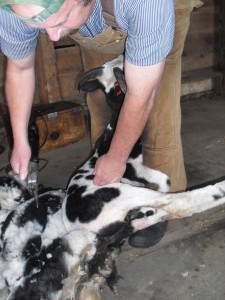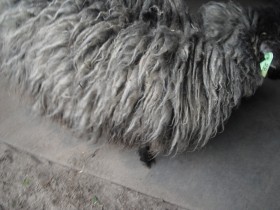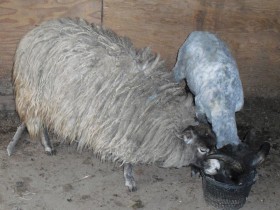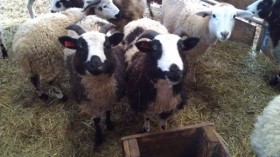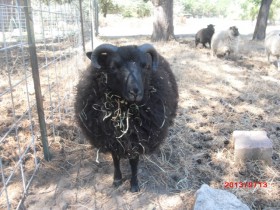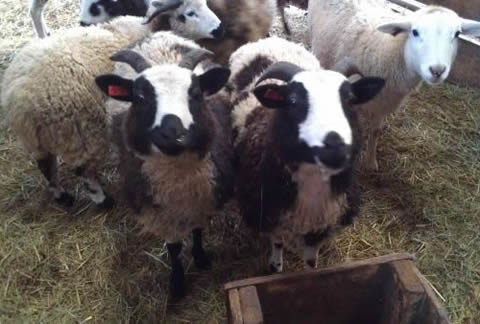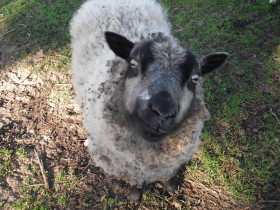
Miniature Sheep
Shetland sheep are considered to be a “primitive” breed (I prefer the term heritage) because they retain characteristics that have not been changed since they were first considered a breed, hundreds of years ago. They are primarily a wool breed but are said to have very good eating (I have yet to try one). Because they are a very old breed, they are small in stature and have the ability to thrive on very poor pastures. Shetland sheep come from the Shetland Islands in Scotland having been introduced to the Islands by early Viking settlers in the 8th and 9th centuries. A North European Short Tailed type, the Shetland is related to the Icelandic, Finn sheep and Romanov breeds. The Shetland survived the harsh conditions and meager forage of the isolated islands. Now, one of the world’s oldest and purest breeds, the Shetland has changed very little over the centuries. For anyone wanting to learn more I recommend the North American Shetland Sheep Association website. They were almost extinct when a small number of Shetlands were imported to Canada in 1948, then in 1980 a small flock of 28 ewes and 4 rams and were required to spend their life in quarantine on the Dailley farm. After a 5 year quarantine, their lambs could be sold and the Shetlands gradually arrived in the United States. I am amazed to find some of my sheep can trace their linage to that importation.
As a primitive breed, they retain some of their small stature. Ouessant sheep, a closely related breed who also got their start on an island, share many of the same characteristics but are even smaller. It is my belief that Shetland sheep naturally would be small and hopefully my sheep can achieve an even smaller status. Why?? Because it is easy to handle a 50 lb ewe and much more difficult to tackle and hold a 150 – 200 lb one (the size of Dorpers and many others). Having small sheep requires less space, pasture and resources and less strength. I think micro farms have their place in our society, especially as our need to produce food and fiber locally grows. These little animals can provide a valuable resource to people with small acreages and areas where larger livestock are not appropriate. Best of all they are wonderful little animals. An excellent coverage of sheep species can be found on the Sheep 101 website. Shetlands are one of the smallest of the British breeds with rams weighing 90-125 pounds and ewes about 75-100 pounds. They are slow to mature but I have a tiny ram that weighs about 50lbs and hopefully will make some tiny offspring. It’s a waiting game.
